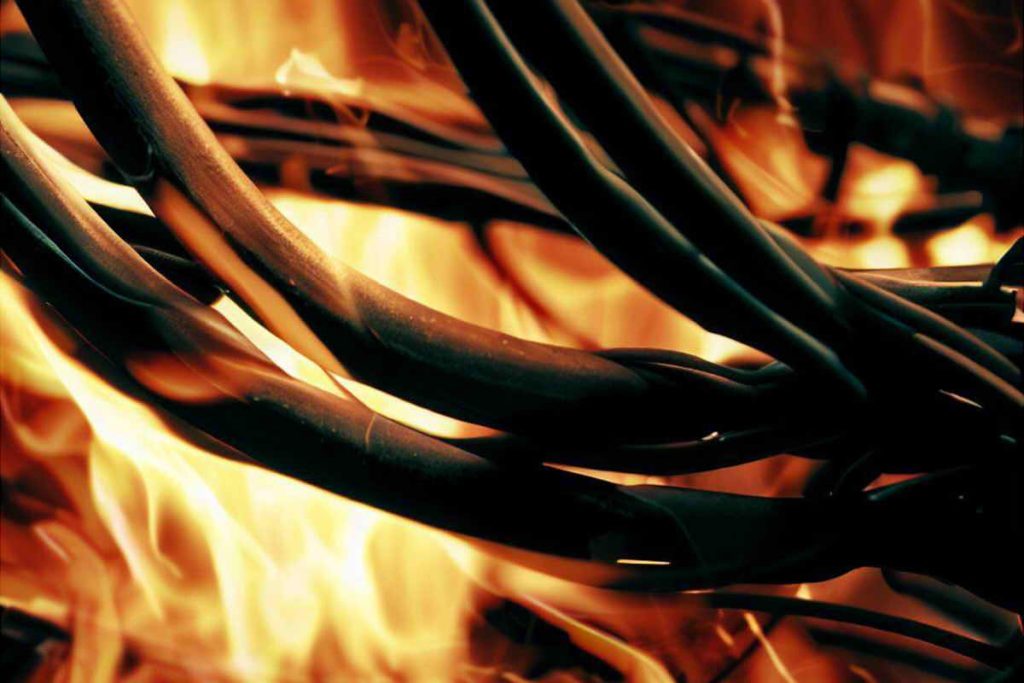There is a wide range of special cables for nuclear power plants. according to estimates, a nuclear power plant with a capacity of one million kilowatts requires more than 100 different types of cables, with a total length close to two million meters and a value of about one billion yuan.
If they are classified by their function, The cables used in the nuclear power plant are divided into five main categories: electrical power cables, control wires, measuring cables, communication cables and fire cables. They should not only have the general characteristics of ordinary cables, but they must also have specific characteristics, as low smoke emission, Free of halogens, flame retardant and specific environmental resistance (as resistance to radiation and LOCA).

Special Cable Requirements for Nuclear Power Plants
Compared with general industrial cables, The biggest difference of cables used in nuclear energy lies in the performance of the materials used in the nuclear power plant. The insulation and sheath materials of these special cables must be composed of low-smoke cables., non-toxic and non-corrosive, and must be flame retardant and halogen-free. For example, only halogen-free flame retardant thermoplastic materials or halogen-free flame retardant cross-linking materials can meet special nuclear safety requirements.
LSZH requirements
LSZH cables use halogen-free polymers as basic materials. In case of fire, These cables emit very little smoke., without toxicity or corrosivity. Flame retardant components can play an effective role in preventing the spread of fire.
Halogen-free polymers can be filled with large amounts of fillers such as aluminum hydroxide or magnesium hydroxide. So, They will release crystal clear water when burned, absorbing a large amount of heat. This way, the temperature rise of the polymer can be suppressed, delay the thermal decomposition and reduce the combustion rate.
Besides, water vapor produced by decomposition and dehydration can dilute combustible gases and produce a fire retardant effect. Polymer flame retardancy is generally evaluated by the oxygen index. Indicates the minimum amount of oxygen required for the sample to burn in a mixture of oxygen and nitrogen. The higher this index, the lower the flammability and the better the fire retardant effect. The oxygen index (HEY) must be at least 28 to show the fireproof property.
Fire resistance
When cables are used in high risk areas, must have the ability to resist fire. In case of a fire, These cables must be able to continue operating safely for a certain period of time, providing power for the rescue of people and equipment.

The fire resistance of cables nuclear is divided into general requirements and special requirements, according to usage requirements. Special requirements include a combustion test of the 1000% during 5 minutes under impact conditions, followed by 5 additional minutes of impact and high pressure water jet, with the requirement that the cable can continue to supply electricity throughout the test.
Since the approval of the IEEE383 cable standard in 1974 in United States, People have paid more and more attention to the strictness of fire resistance test standards. For special cables for nuclear power plants, The product is required to pass the beam combustion test according to IEC332-3, with a concentration of combustion smoke that meets the technical requirements of IEC1034-2 and corrosive flue gases that meet the recommended values in IEC754-2. Besides, The cable core insulation must also pass the vertical combustion test according to IPCEAS-19-81.
Heat resistance
Nuclear power plant cables often work in high temperature environments, so it is necessary that they have long-term heat resistance capacity. Choosing polymers with the appropriate heat resistance can allow cables to have a lifespan of more than 40 years.
Radiation Resistance
The harsh environment of nuclear power plants causes cables to be exposed to large amounts of radiation. This can cause insulation and cladding materials to become brittle and lose their mechanical properties.. Therefore, insulation and coating materials used in special cables in applications of nuclear power plants must have excellent radiation resistance.
Different polymers have different radiation resistance capabilities.. In general, Radiation resistance agents are added to polymers to improve their resistance capabilities. LOCA resistance requirements (coolant loss accident) for cables vary according to different nuclear power plants.
Resume
In summary, special cables for nuclear power plants must have characteristics such as being halogen-free, low smoke emission and fireproof, in addition to meeting normal performance requirements in your installation area. These cables must also meet the requirements for use in special situations such as earthquakes and accidents. (radiation, LOCA/HELB accidents).

